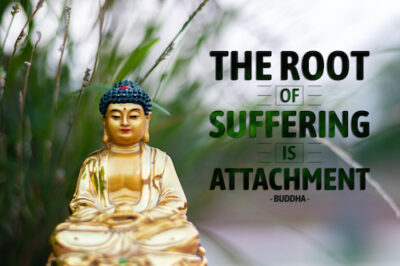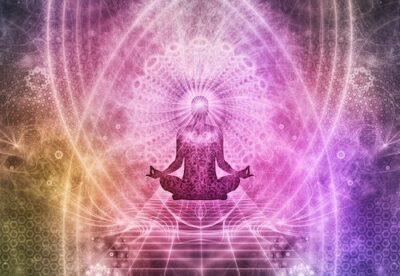How to Heal a Broken Heart

I bet you cannot name even one person among your family and friends who has never experienced pain, loss or some degree of heartbreak. Or can you?
Heartbreak is inevitable on this quest called life. It can stem from a myriad of everyday situations and circumstances such as a breakup, a messy divorce, the death of a loved one, disappointment or perceived betrayal.
Heartbreak cannot be avoided. Right?
Well, the truth is it can….
The heartbreak of modern times
On a superficial level heartbreak is a condition of pain and suffering, which is often accompanied by sadness, depression, grief, anger, blame, shame, a feeling of rejection and/or loneliness.

In addition to the emotions that can accompany this phenomenon, many of the brokenhearted also report a tangible feeling of pain, heaviness or tightness in the center of the chest, where the physical heart resides.
Oftentimes, with heartache, there is a perceived dynamic of victim and villain – the one suffering feels as though they have lost something that was valued and meaningful and someone else is to blame.
Rarely do individuals concede personal responsibility for their potential part in their own pain and misfortune. We know that it is much easier to be angry with another person than it is to be angry with ourselves. This may, unfortunately, perpetuate a lifetime of dysfunctional cycles, failed relationships and suppressed anger, that bleeds into all facets of life.
But there is hope! By better understanding the root cause of all heartache and heartbreak, a person is more prepared and more likely to see their role in their own misery. Herein lies the golden key and answer to avoiding future or potential heart wrenching situations and circumstances.
It all boils down to attachment

Buddha said it best, “Attachment is the root of all suffering”, and he was right.
Attachment originates in the ego and manifests outwardly as cravings, desires and expectations.
Throughout the reel of life every person acquires a set of predetermined beliefs on how the external world should act and react. We become attached to how life should unravel according to this belief system. As long as individual experiences and interactions unfold according to this ideological construct, a person is able to maintain a sense of stability, security and even happiness.
The moment this utopian view falters though we, as human beings, enter into a state of suffering.
What is heartbreak, really?
Heartbreak is a form of suffering fundamentally caused by attachment. Our needs and desires make us automatically attached to someone or something, which is currently fulfilling and satisfying them. The perceived loss of this fulfillment and satisfaction creates a void, which pangs us at the centre of our being, our heart.
To mask and temporarily end our current discomfort, we continually form new desires and therefore new attachments – and the cycle goes on and on. When our newest desires are indulged we feel ease and relief.
This respite tends to be short-lived, however, and subject to the law of impermanence where change is inevitable and nothing lasts forever. Welcome to the uncomfortable and unpredictable roller coaster of life – when desires are fulfilled we are happy and when we lose what was filling that desire we succumb to suffering.
“Attachment is the source of all suffering.” – Buddha
Soul talk

In Tantra the heart is the residence of the soul. While heartbreak appears to be a longing for someone or something outside of ourselves, in reality, it is a longing to understand and know our true selves.
The soul says everything you need is inside of yourself. If the soul had an inner voice it would say, “There is nothing outside of you that can fulfill you like I can”.
Rumi said, “You are the universe in ecstatic motion”. In other words the universe is unlimited by nature and so are you.
You are an image of the divine and within you, you have access to unlimited love, compassion, courage, willpower, success, health and wealth. You’re only “job” in this lifetime is to realize this about yourself, and when you do you will no longer look outside of you to fulfill you.
No person, place or thing can make you whole or complete. Only you can do that. When you discover this and it becomes a fundamental knowing, then desires, attachments and yes, even heartbreak, are irrelevant and even impossible.
The ego walk
So what does the ego say?
The ego says in order to be happy you need things that are outside of you. Lots of money, cars, a big house, relationships, material goods, nice clothes, a

sexy appearance, vacations, and much more are necessary in life in order to be happy, successful and to feel a sense of accomplishment.
The problem here is that when a person reaches what was once deemed to be the “pinnacle of success”, the ego ups the ante and sets new heights that need to be achieved in order to feel whole and complete. It becomes a never ending striving battle to reach the unreachable and attain the unattainable.
Are the soul and ego opposing forces?
At the end of the day the ego, and all of its needs and desires, are a decoy that lure us away from the soul, and instead drive us towards a life of materialism and imperialism, under the false pretense that these will satisfy a deeper calling that exists in us all.
Although seemingly corrupt, the ego, and therefore desires, actually serve a great purpose and, are in fact, tools of the divine. They serve to take us through the endless ebb and flow of life, a roller coaster of joy and suffering, suffering and joy, only to bring us to our brink and awaken us to the insanity of this cycle.
When we have reached our brink then the true search begins. Then and only then do we seriously seek out a means to end the suffering, pain and heartbreak and the journey into thyself takes root.
In this space and place we become open vessels, willing to question reality and accept spiritual truths that were previously implausible. We become inspired to take actionable steps to become masters of our lives, instead of slaves of our attachments and desires.
So what’s the opposite of attachment?
While attachment is a natural part of life and human nature, it can be overcome, and a state of non-attachment, or detachment, can be cultivated through authentic spiritual practice.
It is important to understand that detachment does not mean a person is cold, aloof, dispassionate or withdrawn, nor that they have completely renounced all of life.
It is possible to continue to live and enjoy all the exquisiteness that life has to offer while learning and living the art of detachment.
We can only lose what we cling to

In Tantra, detachment is an elevated state of consciousness and divinity. It is the ability to truly live from the heart and love wholly, fully and completely while never losing sight of who you truly are and what is your true nature. It is living without blinders or veils.
A person in a state of detachment is privy to the structure of the universe and the nature of reality, while also accepting impermanence. Despite the fact that everything is forever changing, someone who is non-attached is firmly rooted in the unequivocal truth that they are one with the divine and their soul is everlasting.
In this state, the actions or inactions of others, the loss of possessions, or the ending of a relationship, are no longer a relevant or a determining factor of a person’s impending happiness. The possibility of heartbreak is eliminated, and a person is freed from the clutches and cycles of pain and suffering.
Tools to get started
Learning detachment is a lifelong path and one that requires an earnest desire to leave behind old thoughts, beliefs and patterns in order to elevate oneself to the next level.
Fear not, however, the journey is both intoxicating and exhilarating. As a practitioner you will slowly begin breaking down all the walls and barriers that prevented you from living your best life, while also tapping into the magic and mystery that makes you you.
So do not delay, start today. Here are a few tools to help get you started!
1. Top 3 yoga poses for controlling your emotions
The first step in detachment is learning to manage and control your emotions. By practicing these 3 yoga poses daily you will have powerful tools for uplifting your mind and emotions to new heights and spiritual levels.
2. Inner self meditation
Join me in this deeply tranquil and highly spiritual meditation as I assist you in tapping into a deeper aspect of yourself while gaining authority over your own mind. This guided meditation instructs you on how to cultivate deeper levels and higher states of consciousness, at will.
3. Bhagavad Gita
This epic Hindu scripture is set in a narrative framework dialogue where Krishna, a great spiritual giant, wisely counsels Prince Arjuna on yogic ideals, including detachment.
Spirituality: The way to spirit

An authentic spiritual path will help a person to transform all of life’s challenges and hurdles, including a broken heart, into a spiritual opportunity. Spirituality brings a person closer and closer to their spirit, helping them to temper and curb the ego and develop a state of detachment.
It is here that living becomes euphoric and life becomes the gift it was meant to be, rather than a curse to escape.
Somananda
Founder and Head Teacher
Spiritual yogi, lecturer, teacher and author, Somananda is the founder and head teacher of Somananda Tantra School.

Recommended course

Tantra Yoga Level 1
True Tantra starts here
